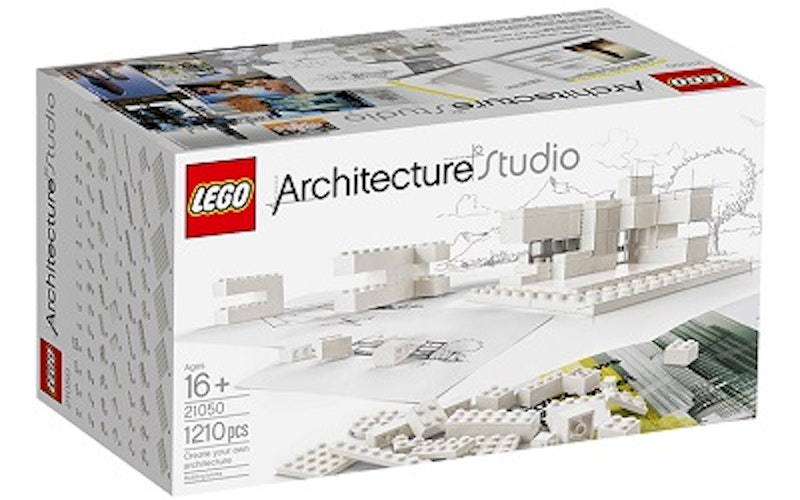
Culture At Large
The problem with white Legos
Always on the lookout for a new way to sell plastic bricks, the marketing minds at Lego have introduced a new Architecture Studio set designed to appeal to budding architects. Interestingly, all the bricks in the Architecture Studio are white.
Whether architects were consulted on this decision or Lego executives merely reflected what seems to be a cliche of the profession, the choice to issue all white bricks is likely to be uncontroversial. Allow me to stir the pot.
Lego bricks are at least part of the reason I became an architect. Seeing my childhood preoccupation with the interlocking bricks, adults would often remark, “You’re going to be an architect.” Turns out they were right. I loved everything about Legos, including the shapes, the firmness with which they lock together and most especially the Piet Mondrian color scheme: primary red, yellow and blue, with a few white and black bricks for good measure. (That Legos now come in a nearly endless number of colors and shapes is an apostasy worthy of a different discussion.)
Why should aspiring architects get only white Legos? And why should thinking Christians care?
In their quest to remove color from buildings, architects are seeking a false transcendence that they neither understand nor acknowledge.
The architect’s answer is that by removing color from the equation, the builder is forced to deal with form as the only variable. As a studio exercise, this makes sense, but buildings (even Lego buildings) get built in the real world of real materials, not all of which are white. Architects’ obsession with the whiteness of Carrera marble and Indiana limestone is a story worthy of Herman Melville (he of the white whale). The fact of the matter is, except for gypsum plaster, not many building materials are naturally white.
My contention is that in their quest to remove color from buildings, architects are seeking a false transcendence that they neither understand nor acknowledge. Religion indeed tends toward monochrome (think burqas, habits, clerical collars). Architects, in their relentless pursuit of structural purity, mistake the absence of color for the absence of sin. It’s not accidental that the most famous architects are invariably both clad entirely in black and referred to as the “high priests” of the profession. Architecture is indeed, like any lawful work, a calling, but it is not a priestly calling in the same way that, say, being a priest is. Modern architecture’s quest for the sublime eliminates decoration, filigree and color and seeks spiritual solace in Platonic forms. All Lego has done is to sniff the zeitgeist.
In my own work, I prefer the glib dictate of Ricardo Legorreta, who famously quips, “We Mexicans are irresponsible in our use of color.” Black and gray are the only colors I use less often than white. My reading of Scripture suggests that God likes color (blue, purple and scarlet thread, every kind of precious stone) and it is reasonable to infer that the cedar paneling of the temple was stained when it was not gilded. God’s rule for color seems to be simple enough: Let wood be wood-colored, stone be stone-colored and metals be metallic. That’s a design philosophy anyone should be able to live with - except most architects.
Which leaves the greatest question unanswered: What is the natural color of a Lego brick? While the precise composition of the plastic from which they are made is mysterious, my answer is simple: any color you can find in a Mondrian.
Topics: Culture At Large, Arts & Leisure, Art